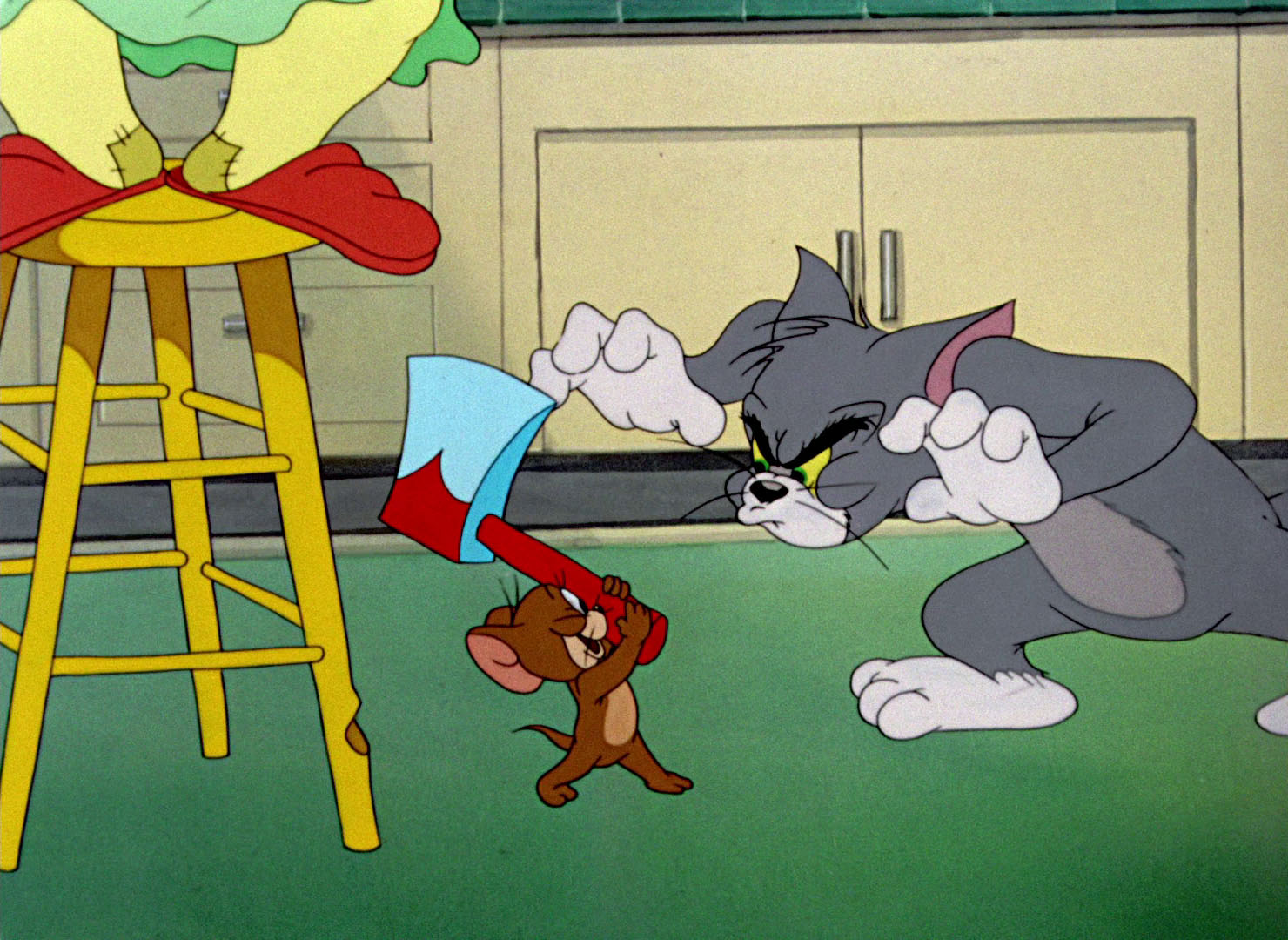
Mouse Cleaning is one of the least seen Tom and Jerry films and this is a shame as it is a real gem.
The premise of this film is incredibly simple. Tom (while chasing Jerry) tracks mud into the house. His owner then tells him, to clean up the mess and if it gets messy while she is gone, Tom is out. Jerry overhears this and decides the best way to get revenge on his rival. So, while Jerry goes around the house trying to make a mess, Tom follows him trying to stop the mouse.
This type of plot had been done before with Tom and Jerry and it would be done again. In fact, the plot is quite similar to the very first Tom and Jerry cartoon, Puss Gets the Boot (1940). However, it has rarely been done as well as it is here. The timing in this film is truly fantastic. William Hanna was a master at comedic timing and this film features him at the top of his game. Probably one of the best examples of this is the scene with Tom catching all the falling eggs. This is such a simply gag but the perfect timing makes it very funny, especially with a wonderful topper gag at the end. This cartoon also does a wonderful job simply building on ever gag before. The film gets more and more over the top as it goes along. Because of this it gets funnier and funnier with each gag. One of my favorite moments is when Jerry takes a donkey into the house. What makes this gag so funny, is that no donkey has appeared earlier and the introduction to this gag makes you think Jerry is welcoming Tom's owner back. The element of surprise here is simply perfect. While Tom and Jerry can often be predictable, this is one gag that few would see coming. Adding to the fun is the wonderful character animation on both Tom and Jerry. Both characters feel completely real here, and you can see them thinking through their every move. A real highlight though is when Tom does a big Tex Avery style take. It is over the top, but also fits the character and the situation perfectly. Scott Bradley's music is also very energetic and fun. It also complements the action on screen perfectly making it much funnier.
This is one of the only four shorts where you briefly see Tom's owner's head. The other shorts are Part Time Pal (1947), A Mouse in the House (1947) and Saturday Evening Puss (1950). The film appeared in the "Other Great Cartoons" appendix of Jerry Beck's book, The 50 Greatest Cartoons. It is the only other Tom and Jerry cartoon to appear in this appendix and there is only one Tom and Jerry cartoon was included in the main list of 50 cartoons, The Cat Concerto (1947).
The reason this cartoon is so little seen is because of one blackface scene. In this scene, not only does Tom's face appear black but he also talks in a stereotypical voice, that is inspired by black actor Stepin Fetchit. This scene is also integral to the film's ending making it so it can't be cut out. Because of this, the cartoon is rarely (if ever) seen on TV and is sadly one of the few Tom and Jerry shorts not available on DVD. If you want to see the cartoon though, you can watch it here.
Below is the movie poster for this film. This is as typically ugly as you might expect from a Tom and Jerry movie poster.










